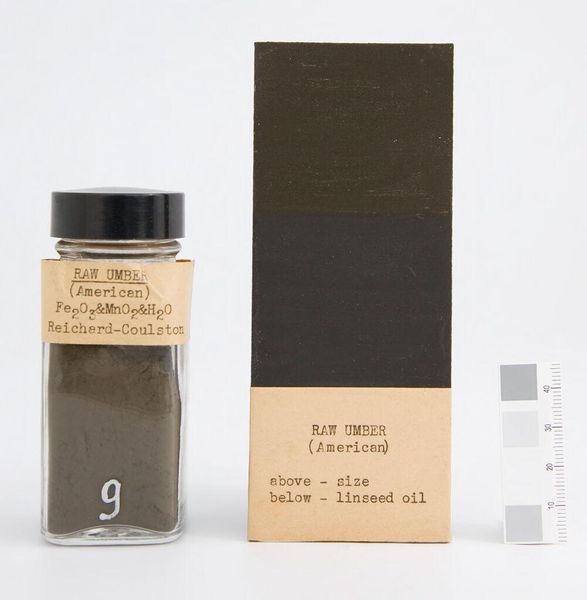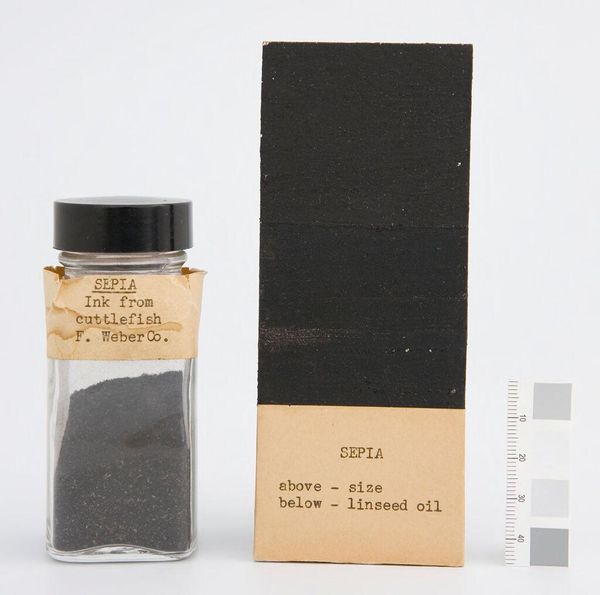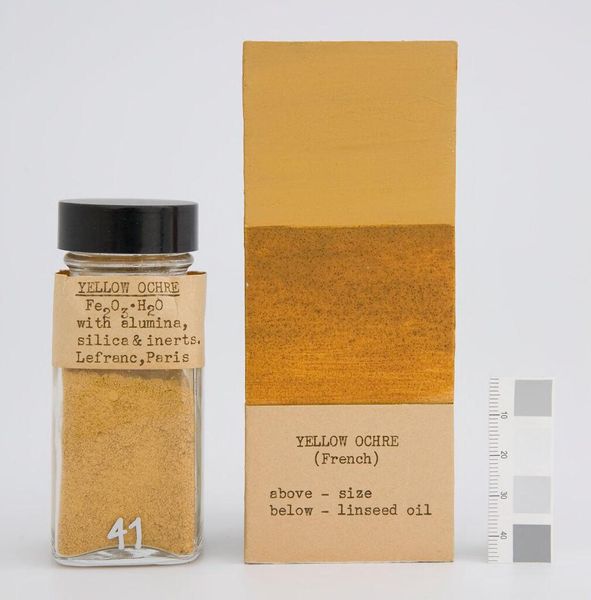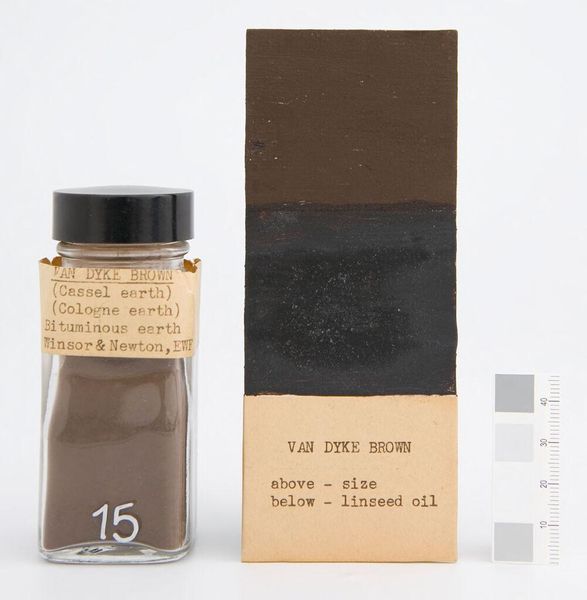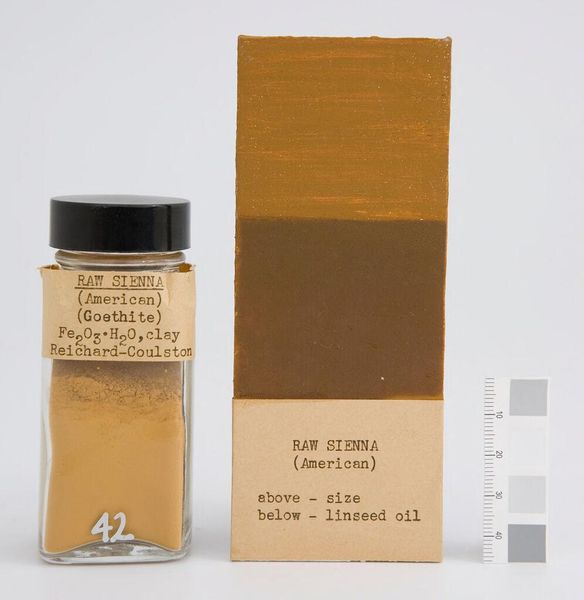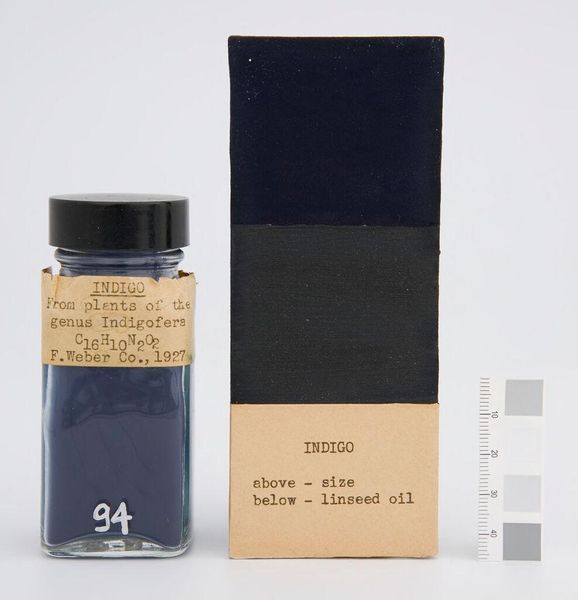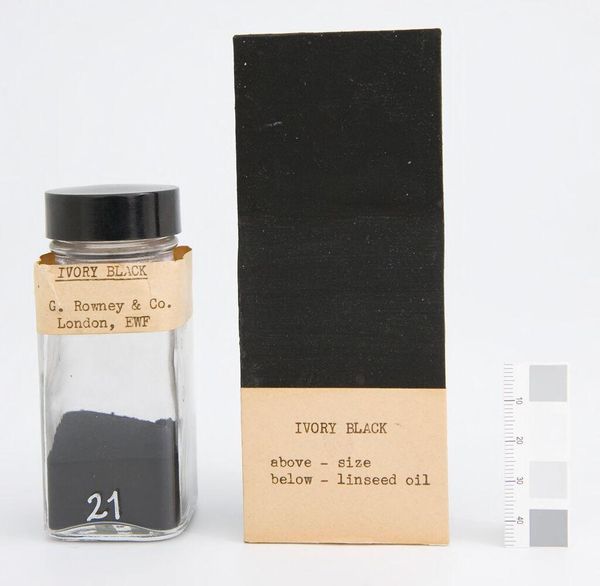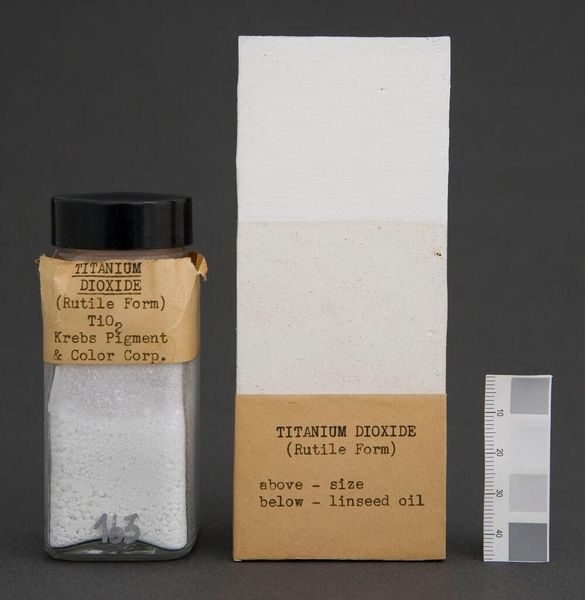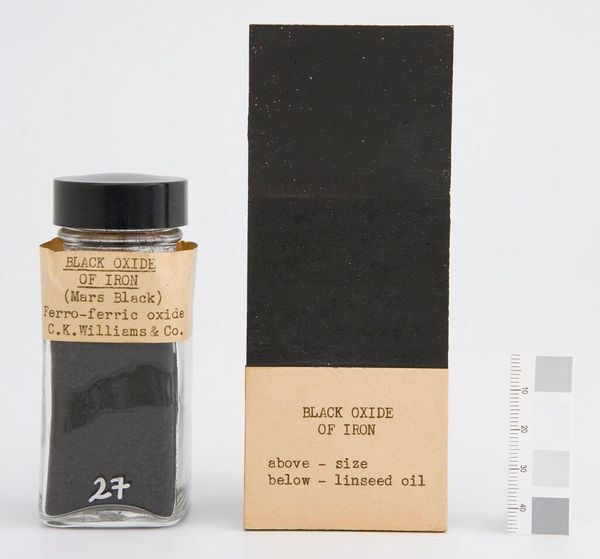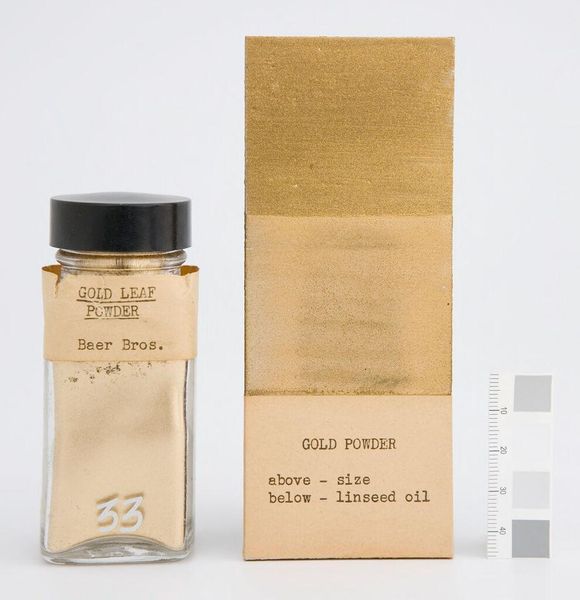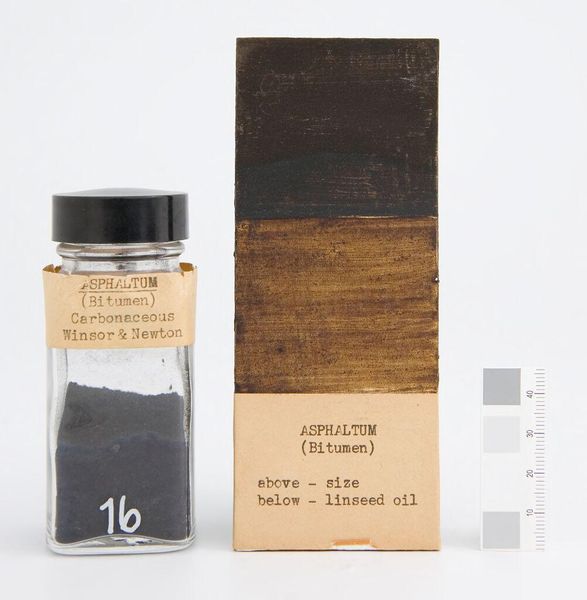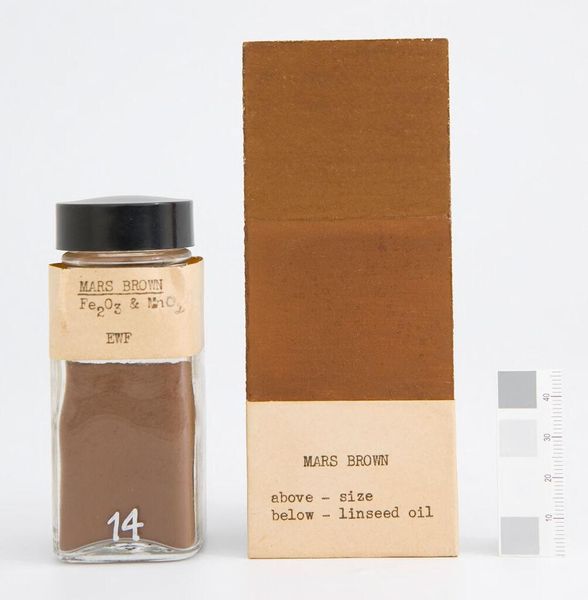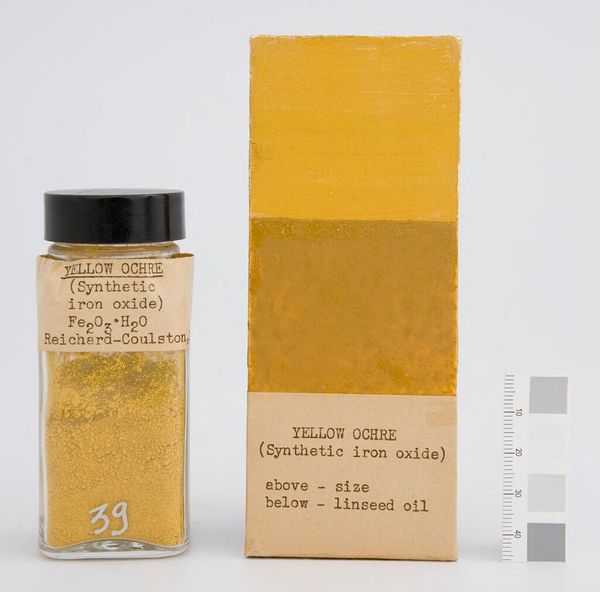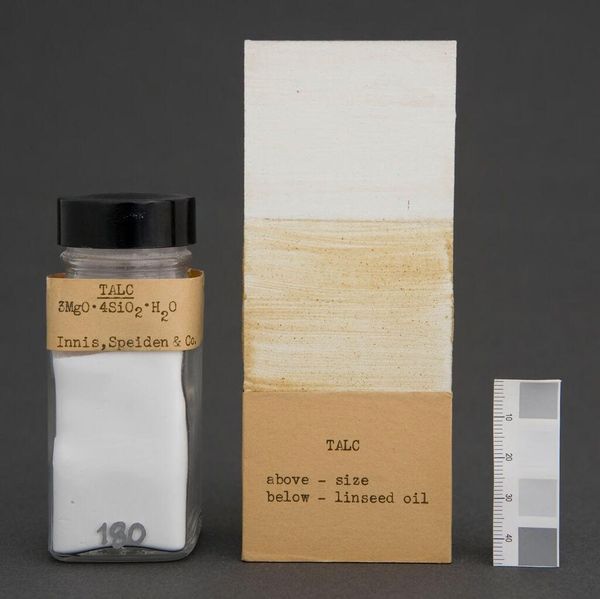
Copyright: CC0 1.0
Curator: Here we have “Raw Umber”, manufactured by F. Weber & Company, Inc. in 1927. It presents a sample of dry pigment alongside the same pigment mixed with linseed oil. Editor: I’m immediately struck by its earthiness; the colors evoke a sense of grounding and timelessness, almost like a relic from an alchemist's workshop. Curator: Indeed. Umber pigments, derived from naturally tinted clay, were historically linked to specific locales, reflecting the geographical origins and cultural associations of the earth itself. This piece captures the transition from raw material to artistic medium. Editor: I see the symbolic bridge between nature and creation—the alchemical transformation of earth into art. It's a reminder of our fundamental connection to the earth and its enduring influence on our creative expression. Curator: Absolutely, and in a contemporary context, one might consider how these pigments played a role in the representation and exploitation of landscapes and resources throughout history. Editor: Yes, the color itself carries a weight of history and cultural meaning. Food for thought.
Comments
No comments
Be the first to comment and join the conversation on the ultimate creative platform.
